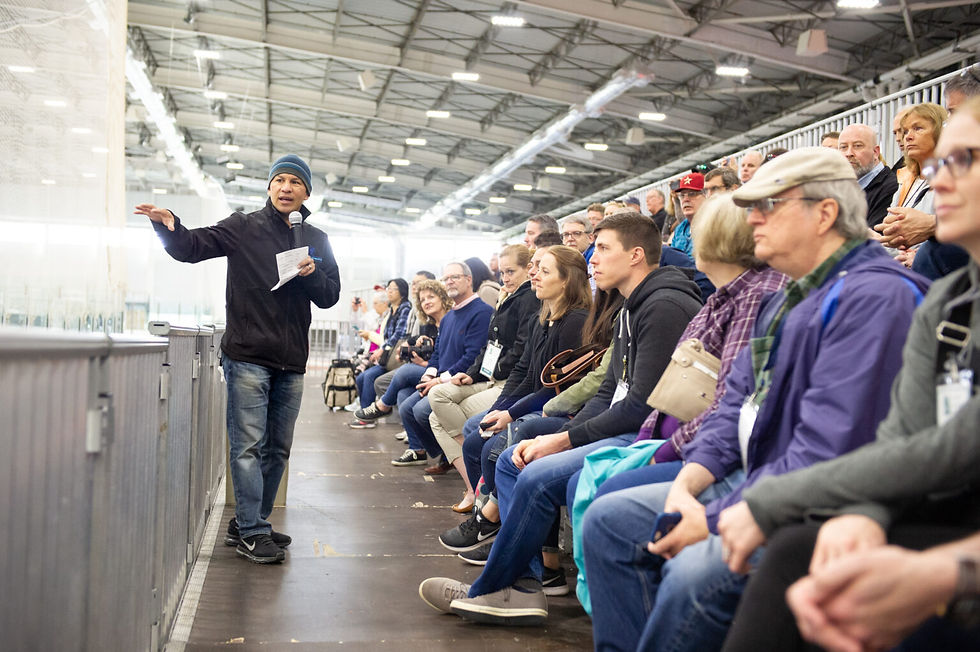Salt Lake City, Olympic Soul: Why Utah Might Be the Most Olympic Place on Earth
- insidetherings
- Sep 28
- 4 min read
Somewhere between the mountain sunrise and the swish of a curling stone, this city does something few former Olympic hosts manage to do: it remembers.
Not just in plaques or dusty commemorative banners, but in the skate marks still etched into the ice at the Utah Olympic Oval. In the kids launching off ski jumps at Utah Olympic Park. In the volunteers who still wear their 2002 jackets like sacred heirlooms. Olympism is in the soul of the former (and future) Olympic city.

And now, Salt Lake City isn’t just remembering — it’s preparing.
On July 24, 2024, the International Olympic Committee made it official: Utah will host the Winter Games again in 2034. A full generation after its 2002 debut, Salt Lake City will welcome the world once more. And just this last week, the United States Olympic and Paralympic Committee held its annual assembly in Salt Lake City.
But even before the ink dried on the bid, the city had already become something rarer than a host. It had become an Olympic city in spirit.

A Legacy that Grew Legs
There’s a romantic narrative we often tell about Olympic cities: the flames are lit, the nations march, the athletes fly, and for two weeks, the world turns toward one place. But what happens when the cameras leave?
In too many cities, the legacy fades like a temporary tattoo.
Not here.
Since 2002, Salt Lake City has not just preserved its Olympic venues — it has activated them. The Utah Olympic Oval is still home to world records and weekend open skates. The Nordic trails at Soldier Hollow draw both Olympians and first-graders learning to ski for the first time. And Utah Olympic Park? It hums year-round with aerialists, bobsledders, and kids in oversized helmets dreaming big.
“We didn’t just build these venues for the Games,” said Colin Hilton, President & CEO of the Utah Olympic Legacy Foundation. “We built them for the people who would come after.”
And come they did.

Today, these sites welcome more than a million visitors annually — a rare feat in the world of Olympic sustainability. They serve not just athletes but entire communities, proving that Olympic infrastructure can be more than a showpiece; it can be a shared resource.
Generations of Flame Carriers
If you walk the grounds of the Olympic Cauldron Plaza, you’ll find names engraved in bronze — volunteers, athletes, and organizers who made 2002 possible. But what’s even more powerful are the names you don’t see: the children of those volunteers now coaching youth teams, or training themselves for 2034.
Salt Lake City is that rare place where Olympic dreams aren’t just exported — they’re homegrown.

Take Casey Dawson, a 2022 Olympian in speed skating, who grew up skating in Kearns. Or
the dozens of young skiers from Park City who now feed into the U.S. Ski & Snowboard pipeline. Or the public school kids who ride the same bus routes Olympians once took, now stopping off at world-class facilities like it’s normal — because here, it is.
This is what it looks like when the Olympic spirit becomes intergenerational. It’s not just nostalgia; it’s inheritance.

2034: Not a Comeback—A Continuation
In some ways, Salt Lake City was never really trying to “get the Games back.” Because the Games never truly left.
So when the IOC officially awarded the 2034 Winter Olympics to Utah in the summer of 2024, it wasn’t a coronation — it was a confirmation. A nod to a city that had not just kept the flame alive, but built an entire ecosystem around it.

And they’re not starting from scratch.
With nearly all venues already built and operational, and public support hovering near 90% in Utah polling, Salt Lake’s 2034 Games may become the most fiscally responsible Olympics in modern history. There’s talk of a low-emissions transportation model, local college student housing doubling as athlete villages, and legacy-based programming for underrepresented youth.
It’s not a redo. It’s a renaissance.
A City That Embodies the Olympic SOUL
There’s a reason why athletes love training here. It’s not just the altitude, or the facilities, or the quiet excellence of a city that doesn’t need to shout. It’s the values that echo through the canyons and rink halls: Excellence. Friendship. Respect.
Olympism lives in daily practice here — in para-athletes training alongside able-bodied peers, in refugee youth finding belonging through sport, in coaches who prioritize mental health as much as medal counts.
Salt Lake City doesn’t wear these values like branding. It embeds them — in civic planning, in sport education, in cultural programming that reaches far beyond competition.
As IOC President Thomas Bach said when awarding the 2034 Games:
"Salt Lake City has shown the world what Olympic legacy can look like when it lives in the people, not just the past."
The Soul of a Movement
In a world where mega-events often fade into memory, Salt Lake City offers a quiet miracle: an Olympic Movement that moved in.
It’s in the skyline. In the ski jumps. In the rhythm of blades against ice. It's in the people who live here.
And now, with 2034 on the horizon, this city has the chance to do something extraordinary — to show the world that the Olympics aren’t just about who wins gold.
They’re about what we carry forward.

SEO Keywords Embedded:
Salt Lake City 2034 Winter Olympics
Olympic host city legacy
Utah Olympic training centers
Most successful Olympic cities
Generational impact of the Olympics
Olympic venues reused
Olympic values in community




Comments